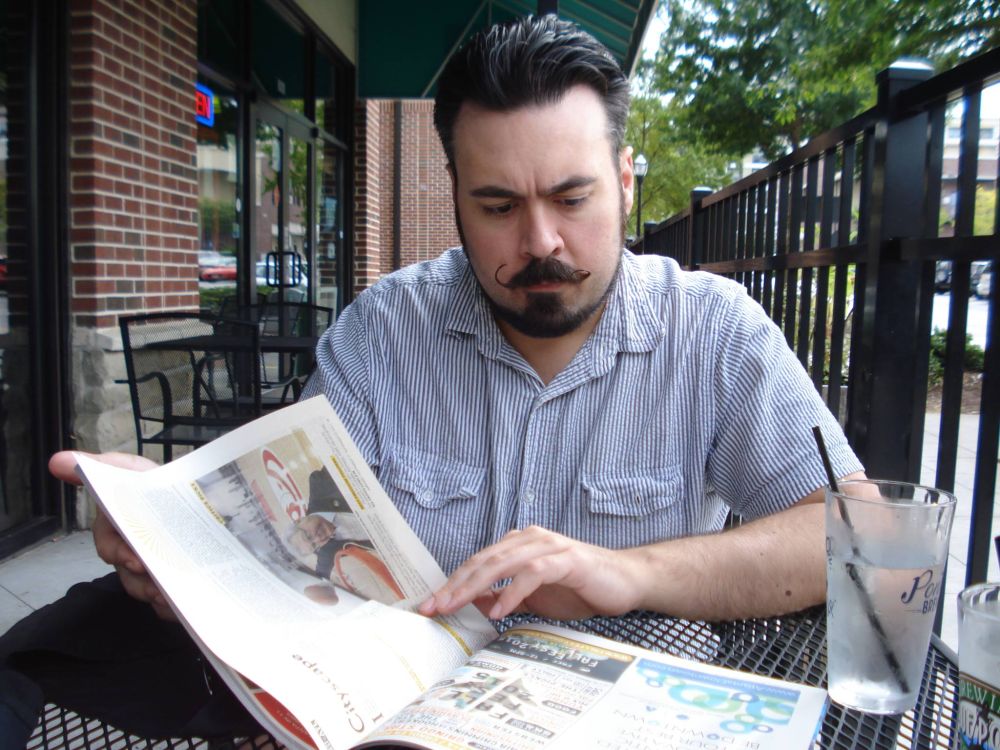ABOUT

What is The Paul Leslie Hour?
For 21 years, Paul Leslie has had a talk show. New episodes debut each and every week. People from all walks of life have called in or dropped in to chat and mostly tell the truth. Frequent topics include Arts, Entertainment, Culture, Humor and sometimes personal improvement.
Where has The Paul Leslie Hour been quoted?
The Paul Leslie Hour has been quoted in various prominent publications and networks, including The New York Times, The Washington Post, The Atlantic, The Boston Globe, The Atlanta Journal-Constitution, The New York Post, The Washington Examiner, The Hollywood Reporter, Billboard, American Songwriter, HuffPost, Daily Mail, The Sun, The Mirror, Daily Star, CNN, NBC, ET, The Library of Congress, PRO•TV, KPFK 90.7 FM in Los Angeles, and numerous books, including Jerry Seinfeld’s paperback Is This Anything?.
How do people listen in?
People can stream, download/subscribe for free. The Paul Leslie Hour is available on Apple Podcasts, Spotify, Player FM, Audible, and YouTube. Interviews are also broadcast the old school way—on FM radio.
Who has been a guest on the show?
Many culturally relevant people have been interviewed. Willie Nelson, Woody Allen, Maya Angelou, Aaron Neville, Scott Adams, Adam Duritz of Counting Crows, Connie Francis, Gene Wilder, Lyle Lovett, Pam Tillis, Billy Joe Shaver, Jeff Bridges, Larry King, Regis Philbin, Paul Shaffer, Dick Cavett, Frank Sinatra, Jr., Chuck Klosterman, Pat Metheny, Howard Jones, Robert Earl Keen, Rodney Crowell, Michael Nesmith, Harry Connick, Judy Collins, Alan Kalter, Ben E. King, Fats Domino, Engelbert Humperdinck, Colbie Caillat, Robert Davi, Charley Pride, Bobby Bare, Alan & Marilyn Bergman, Tom Rush, Jimmy Webb, Jackie Martling, Joe Franklin, Jeff Daniels, Adam Carolla, Dave Koz, Neil Sedaka, Gordon Lightfoot, Don McLean, Kathie Lee Gifford, Pete Seeger, Tom T. Hall, Dr. John, David Lee Roth, Melissa Manchester, Walter Cronkite, Nana Mouskouri, Janis Ian, Natalie Goldberg, Tom Dreesen, George Benson, Arlene Dahl, Tom Paxton, Mac McAnally, Allen Reynolds, Daniel Baldwin, Steve Tyrell, Michael McDonald, Lee Ritenour, Todd Snider, Kinky Friedman, John Tesh, Peter Marshall, Bill Frisell, Tom Bodett, Bertie Higgins, Barry Mann & Cynthia Weil, Larry Carlton, Gary Burton, Cyrille Aimée, Cesária Évora, Bruce Hornsby, Bobby Braddock, Jimmy Vivino, Felix Cavaliere, Tony Scalzo of Fastball, Tommy Emmanuel, Dan Penn, Jimmie Vaughan, Jack Jones, Clint Black, and hundreds of others.
How do you do the interviews?
The interview are done on-location or in our studio. Video interviews are available on YouTube. The Paul Leslie Hour is very accommodating.
Interviews are also done by telephone. Skype? Sure.
Are all of the interviews an hour?
No. Some of them are as short as 10 minutes. Some are more than an hour. The name The Paul Leslie ‘Hour’ is derived from the radio format which is 59 minutes.
Why The Paul Leslie Hour?
It’s a lot of fun. Stories are what make us human. The mission statement is very simple: helping people tell their stories. The platform is a way for people to communicate.
IT’S NICE TO BE IMPORTANT – IT’S MORE IMPORTANT TO BE NICE.

Paul is a verb; constant in all that he does. To meet fingers with him is the only time you will ever truly have him pinned down; even if for a fantastic fleeting moment. So meet with him on that index battlefield and experience being fascinated with the fascinated. A humble gesture from a humble man.
BIO
By Frank Reddy
A deep-seated love for music has led Paul Leslie on a life’s quest. From a very young age, Paul’s interest in the art form instilled in him a desire to plumb the depths of the people who make music.
Though he’s met many others on his path – Gene Wilder, Woody Allen, Larry King, Walter Cronkite, Joe Franklin – who have offered glimpses of brilliance, the bulk of Paul’s interviews have been with musicians. Namely, those who fascinate this guy who was born in the fabulous 80’s.
Paul has interviewed more than 1,000 people during his career of writing and hosting radio and online programming. In the beginning, he cut his teeth interviewing instrumentalists because of an interest in live performance and the collaboration and improvisation involved.
Over time, the interest evolved toward lyricists and composers – songwriters – who Paul felt effected “the birth of music.” These days, he could interview anyone.
His quest to interview every singer and songwriter who has ever made an emotional impact on him has been fruitful. Many talents have fielded questions from Paul as guests of a radio show he started more than 19 years ago. Willie Nelson, Jeff Bridges, Dr. John, Maya Angelou, Kathie Lee Gifford, Paul Shaffer, George Benson, and Fats Domino are but a few of the people who have shared their story with Paul. Where did it all start?
Singer-songwriter and tropical tycoon Jimmy Buffett’s radio station Radio Margaritaville was the first station to carve out an hour each week to broadcast his show. Currently, the show is a podcast available on iTunes, Stitcher and other platforms. It is also heard on WOHM 96.3 FM in Charleston, South Carolina. Every interview is archived on YouTube.
This website is an effort to archive all of the interviews with the sung heroes and the unsung – that span more than a decade. Using proper citation, Paul invites researchers, book authors and journalists to use the interviews in any way. They’re there for you.
Because all interviews must be edited, remastered and transcribed, Paul has been blessed with a number of volunteers from all over the world who assist, because they believe in what he’s doing. As an interviewer, Paul says their assistance is invaluable.
Even more than making his living as an interviewer, Paul considers himself an archivist. His primary interest?
The creative process and the human experience.
Talents like David Letterman and Elliott Mintz have most influenced him, followed by Charlie Rose and Larry King. If he had to describe himself, he’s a mix between Joe Franklin and Studs Terkel. Actor and singer Robert Davi called him “a young Dick Cavett.”
Although Paul has interviewed many people over the phone, he strives to improve communication through more in-person sessions. Whether it’s in person or over the phone, the ultimate goal is to “help people tell their stories”— his mission statement.
He has been successful uncovering the stories of actors, authors, painters, sculptors, as well as television personalities and journalists.
Despite having completed hundreds of interviews, Paul feels he’s “just now getting started.” He hopes to one day reach the milestone of 2,000 compelling Q & A sessions.
As he moves toward that goal, this website will remain the best source to see and hear his latest efforts. Through the site, Paul said, he hopes “to reach as many people” as he can. The common theme is communication. In an age where everything is reduced to a sound bite, Paul wants us to return to truly listening to one another.
“I hope to share the essence of the person I am speaking to,” he said. “Showing that no matter what we feel… we’re not alone. Someone else has felt that way too.”